China’s growing carrier ambitions were underscored recently by the use of its newest operational carrier to send a signal to Taiwan.
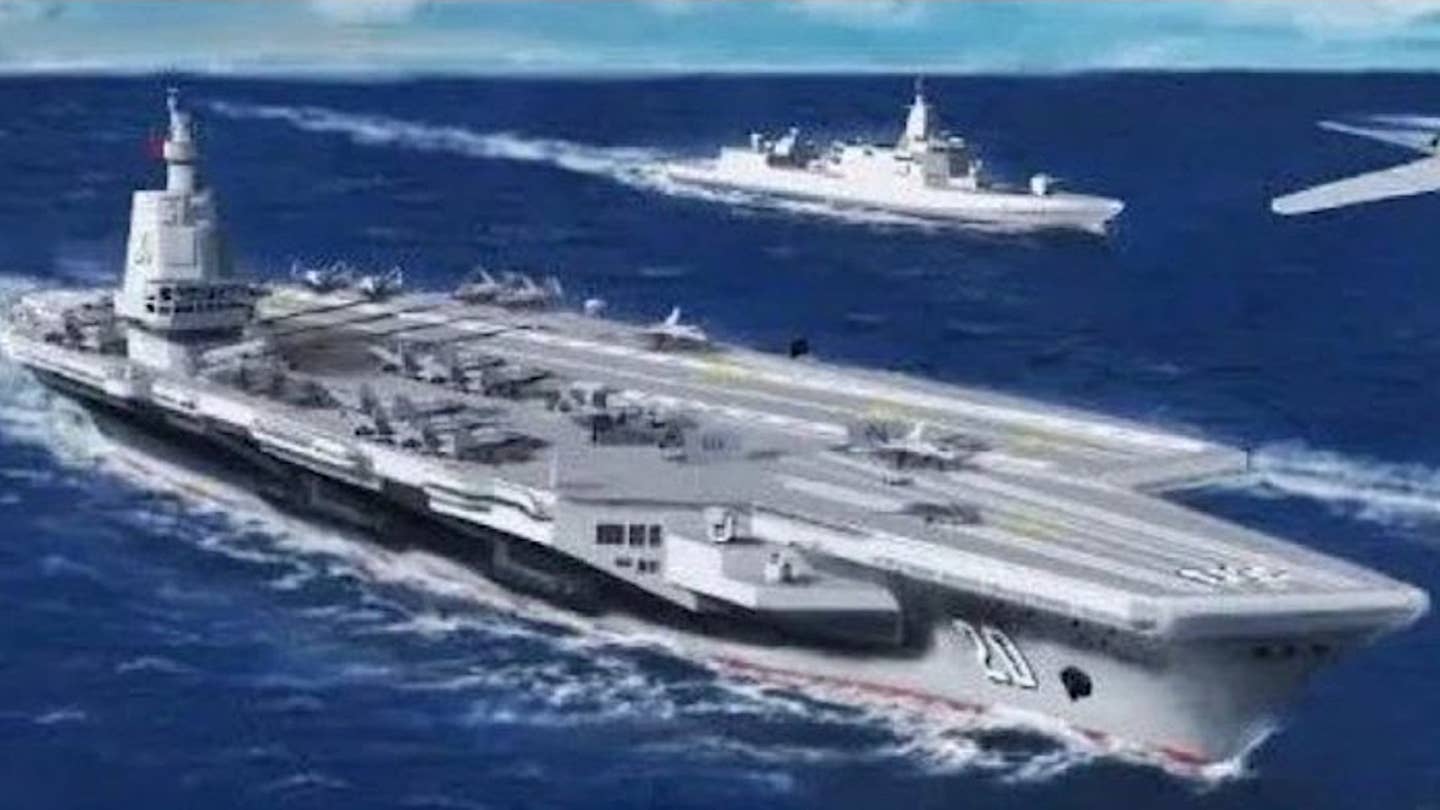
Two pieces of artwork from China’s Jiangnan Shipyard have recently emerged depicting what appears to be a new aircraft carrier design. This could be a glimpse at one concept for a planned future Chinese carrier commonly referred to as the Type 004. The images show a vessel that is distinct from the Chinese carrier Fujian, also known as the Type 003, which Jiangnan is building now. It also has some broad external similarities to the U.S. Navy’s Ford class and France’s future New Generation Aircraft Carrier.
Twitter user @HenriKenhmann, an independent China-focused defense analyst who runs the website East Pendulum, posted copies of the artwork, seen below, online earlier today. The appearance of these images also follows the Chinese People’s Liberation Army Navy’s (PLAN) first domestically-built carrier, the Shandong, making its first voyage out into the Western Pacific proper this week. To get there, the ship sailed through the Bashi Channel south of Taiwan, sending a signal to authorities on the island at a time of increased friction with the government on the mainland.
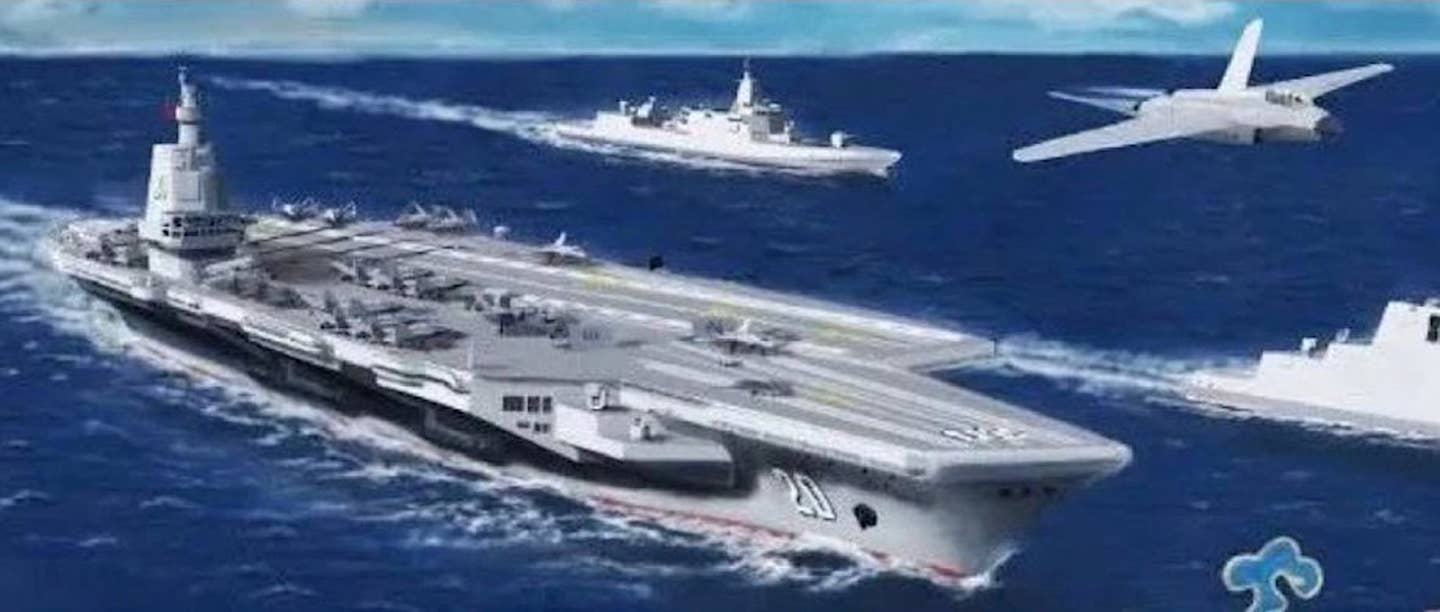
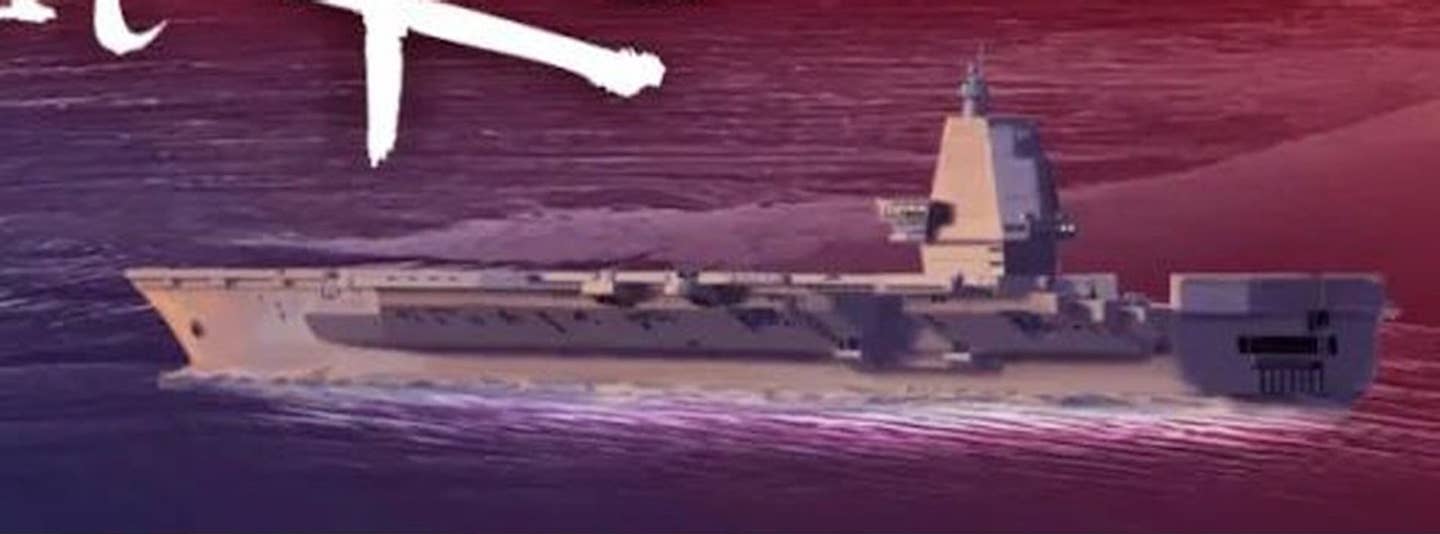
When it comes to Jiangnan’s apparent new carrier concept, details are limited. From what can be seen, the design clearly has a catapult-assisted takeoff but arrested recovery, or CATOBAR, configuration, just like Fujian. The PLAN’s two existing carriers, the Type 002 Shandong and Type 001 Liaoning, are both short takeoff but arrested recovery, or STOBAR, types with prominent ski jump-type bows.
CATOBAR carriers offer significant advantages over STOBAR types, including allowing the launch of aircraft at higher gross weights, which translates to larger fuel and ordnance loads. They can also generally accommodate a wider array of aircraft types, too. This includes larger and slower designs, such as the still-in-development KJ-600 carrier-based airborne early warning and control aircraft, one of which appears to be depicted in the new Jiangnan carrier art.

In terms of the depiction of the carrier’s air wing, the art also shows numerous stealthy combat jets that look to be at least broadly similar in design to the stealthy Shenyang J-35. A carrier-capable derivative of that aircraft is now in development.
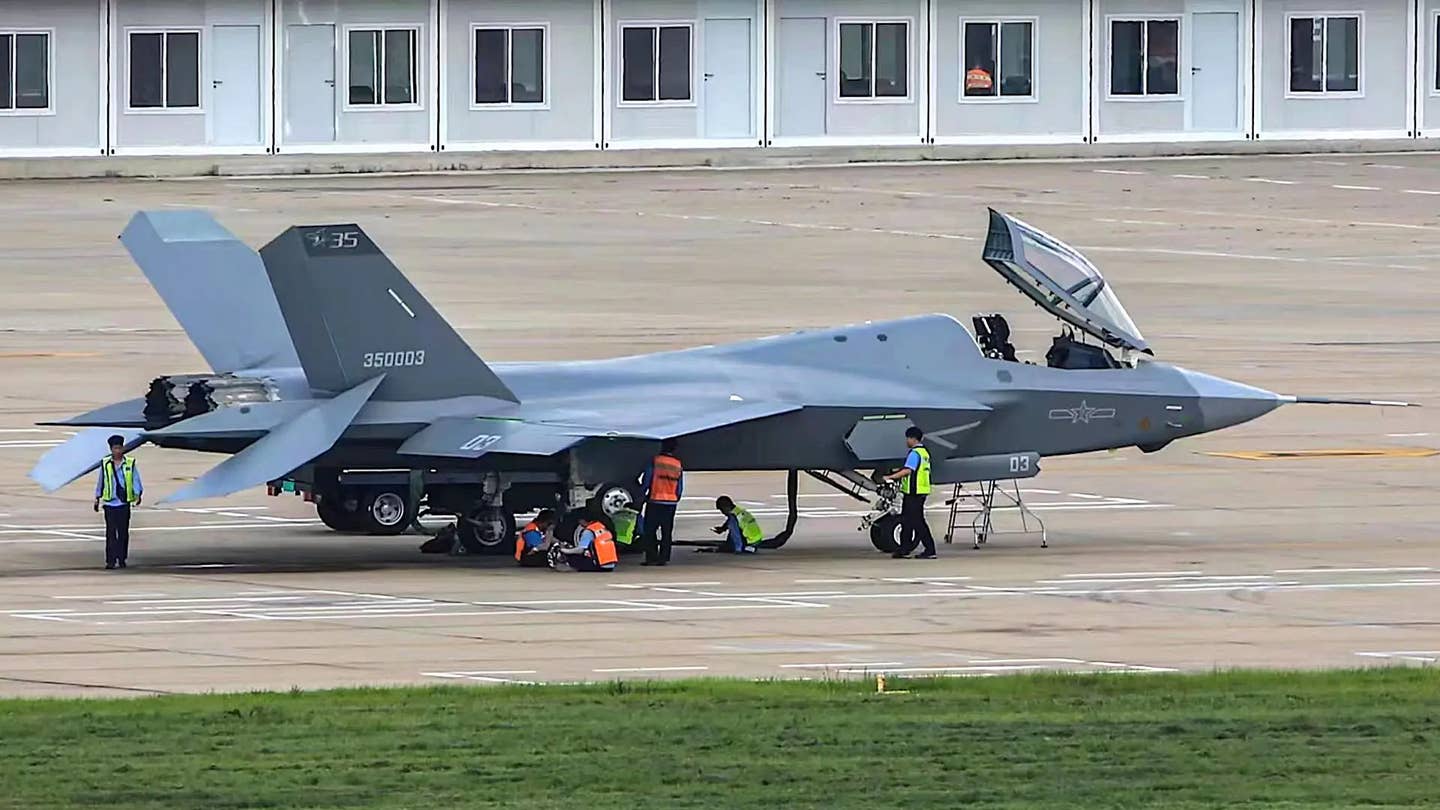
Other more specific features and capabilities are harder to discern. On Twitter, @HenriKenhmann speculated that Jiangnan’s new carrier concept could be nuclear-powered, something that has long been reported to be of interest to the PLAN. Nuclear propulsion gives ships effectively unlimited range, although they still need to be resupplied for other reasons. Nuclear power also presents benefits when it comes to generating the electricity that modern warships need to adequately power advanced weapons, sensors, mission systems, and more.

One would imagine that any future Chinese CATOBAR carrier would have an advanced electromagnetic aircraft launch system (EMALS), as is the case with Fujian. The U.S. Navy’s USS Gerald R. Ford is the only operational carrier in the world currently equipped with such a catapult system. This will be a feature on the other flattops in that class. Its also expected to be a component of the future French New Generation Aircraft Carrier design.
The United States and France are also the only two countries operating CATOBAR carriers of any kind at present. The types the two countries have in service now are all nuclear-powered, as well. France’s New Generation Aircraft Carrier will have nuclear propulsion, too.
India also plans to acquire a conventionally-powered CATOBAR-configured carrier in the future, which may have EMALS catapults.
With all this in mind, it’s perhaps not surprising that the overall look of the carrier in the new art from Jiangnan is very reminiscent, at least externally, of both the Ford class and the French New Generation Aircraft Carrier designs. This is particularly true when it comes to the very rearward placement of the island superstructure and its configuration with what looks to be fixed-face radar arrays on its upper sides. The U.S. Navy often touts Ford‘s island arrangement, and how that impacts the configuration of the ship’s flight deck, among other things, as being highly beneficial for a number of reasons, as you can read more about here.
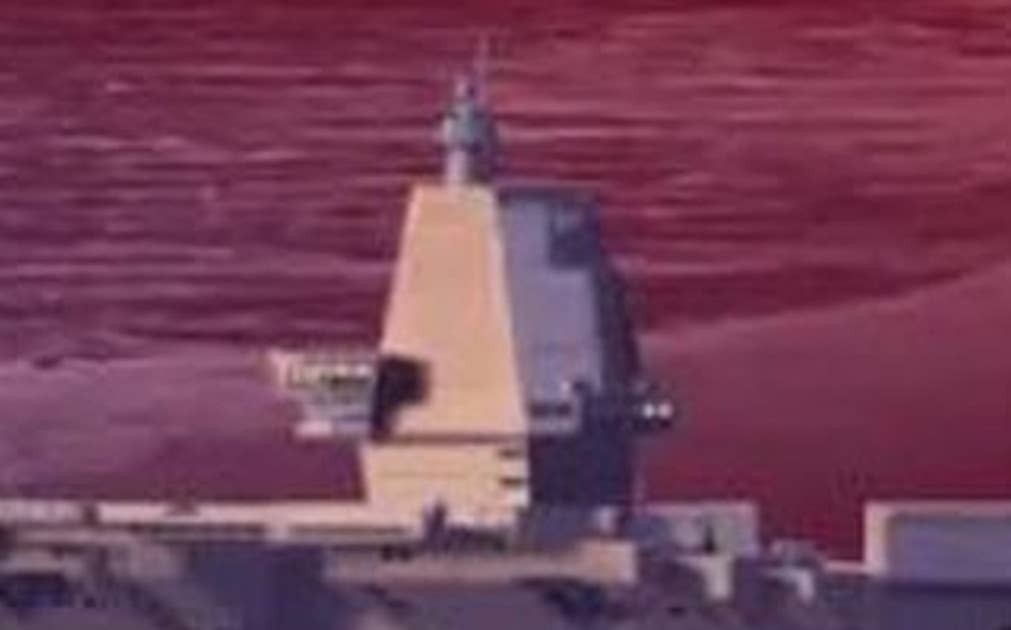
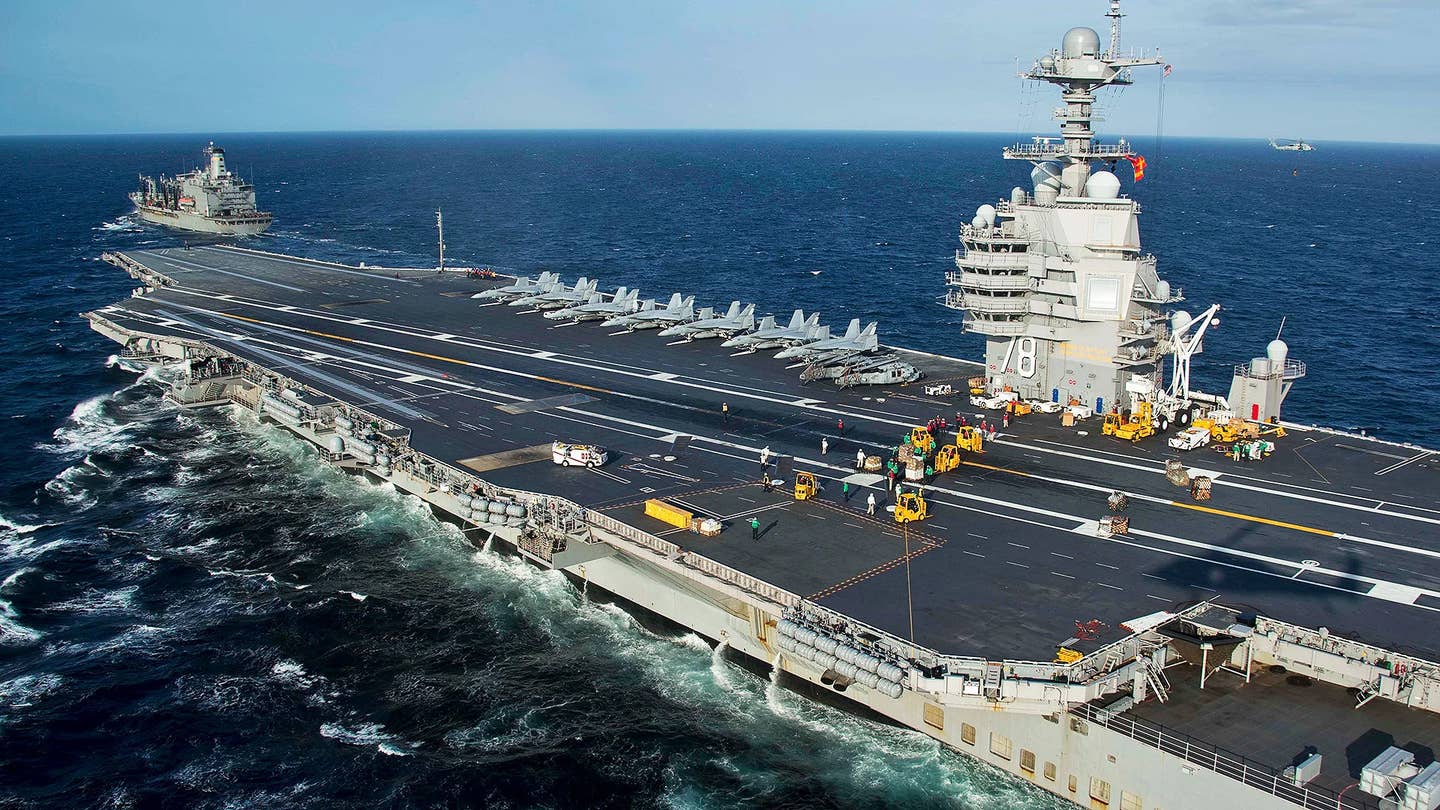
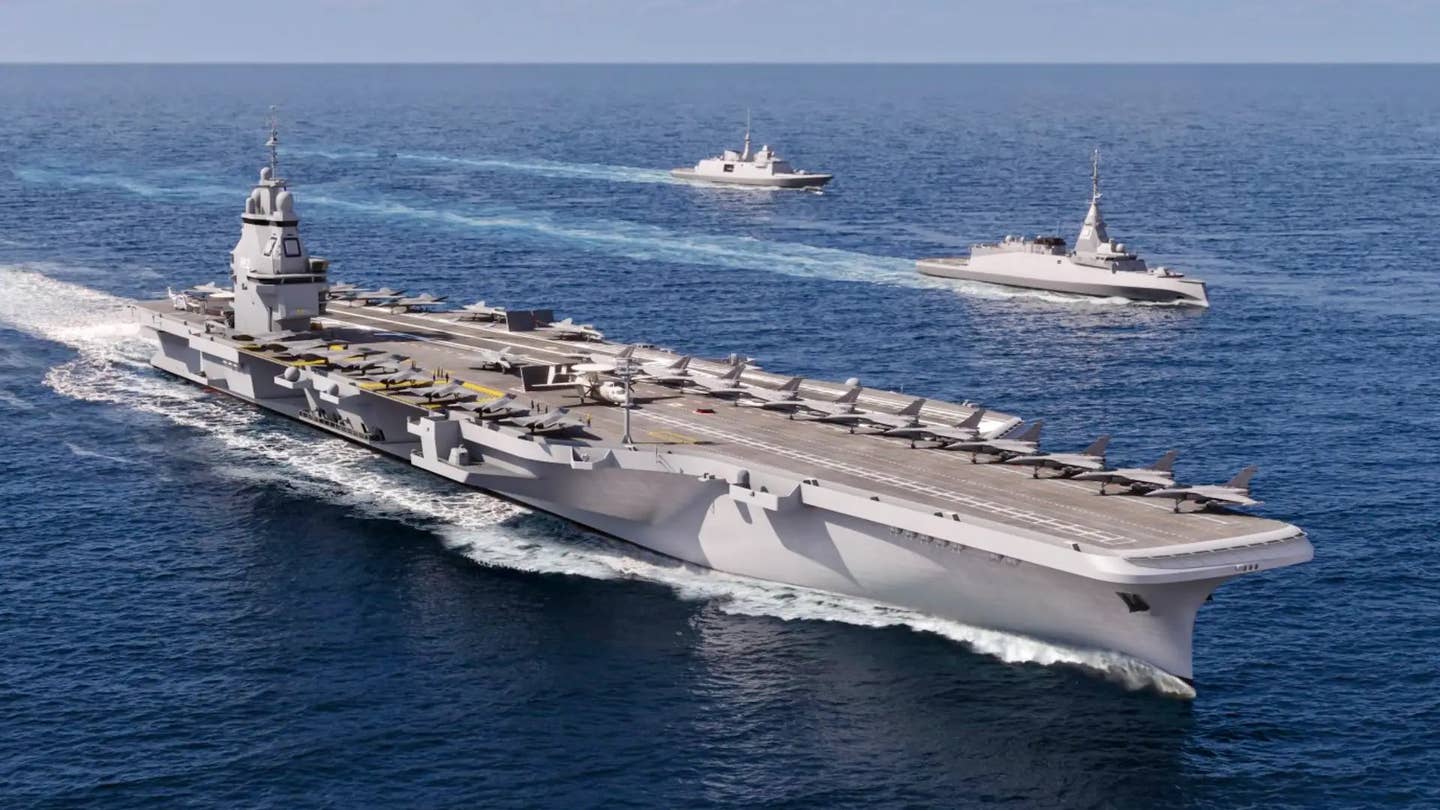
How much the new carrier concept artwork from Jiangnan does or doesn’t reflect the current plans for the Type 004 remains to be seen. Regardless, the PLAN does seem to have very clear ambitions to expand the size of its carrier force to include increasingly more capable ships like the forthcoming Fujian.
Though there is a very active debate among experts and observers about the future utility of aircraft carriers in a world with ever-more-advanced anti-ship threats, the PLAN certainly seems to feel that they are still valuable power projection platforms, both regionally and on a more global scale. The apparent recent use of Shandong to send a message to the government in Taiwan around Taiwanese President Tsai Ing Wen’s meeting with U.S. Speaker of the House Kevin McCarthy in California on Wednesday. In the United States, the Speaker of the House of Representatives is the third most senior government official.
The same day as Tsai and McCarthy’s meeting, Shandong, together with a Type 054A frigate and a Type 901 replenishment ship, passed through Bashi Channel under the watchful eye of Taiwanese forces. Following Tsai’s get-together with McCarthy, a California Republican, the Chinese government vowed a “forceful” response. It subsequently announced sanctions against a number of American organizations that facilitated the meeting.

A forthcoming live-fire Chinese military exercise in the Taiwan Strait has now been announced, as well. However, the response so far appears far more muted than Beijing’s reaction to former Speaker of the House Nancy Pelosi’s visit to Taiwan last year. The arrival of Pelosi, a long-time Democratic Representative from California, on the island triggered a massive show of force from the People’s Liberation Army that included numerous live-fire ballistic missile launches.

Yesterday, Chinese authorities also launched what they said would be a three-day operation in the Strait that could involve boarding Taiwanese military and commercial ships ostensibly for ‘safety inspections.’ The government in Taiwan has said it will not cooperate.
What the PLAN’s plans for the Shandong and the ships accompanying it now might be are unclear. Taiwanese and Japanese forces continue to monitor the Chinese vessels as they conduct ostensible training exercises in the Pacific east of Taiwan.
“The Ministry of Defense and the Self-Defense Forces will continue to conduct warning surveillance and information gathering,” according to a Tweet from Japan’s Defense Ministry yesterday.

Beyond any messaging aimed at Taiwan, Shandong‘s current presence in the Western Pacific highlights the PLAN’s growing carrier capabilities and its ability to employ them further and further away from the mainland. Shandong‘s cousin Liaoning is currently undergoing post-deployment maintenance, highlighting the general value of having multiple carriers to draw on. Having three carriers will allow the PLAN to have one at sea, one working up for a deployment, and another in a post-deployment or maintenance phase, all simultaneously. Additional flattops can only increase that capacity.

It is no secret that the Chinese government is investing heavily in naval facilities abroad, including those capable of accommodating very large warships like aircraft carriers. Authorities in Beijing are otherwise clearly looking to expand access to foreign ports to otherwise support expanding naval operations well beyond the country’s borders.
“They’re a long way toward establishing that in Djibouti. Now they’re casting their gaze to the Atlantic coast [of Africa] and wanting to get such a base there,” now-retired U.S. Army Gen. Stephen Townsend, then-commander of U.S. Africa Command, told the AP in 2021. “They’re looking for a place where they can rearm and repair warships. That becomes militarily useful in conflict.”
Nuclear-powered vessels would reduce some aspects of the logistics demands for fleets operating around the world.
Altogether, whether or not the new carrier concept artwork from Jiangnan Shipyard represents the plans now for the Type 004, it certainly underscores the PLAN’s desire for a future battle fleet that includes more capable flattops and more of them.
Contact the author: [email protected]








